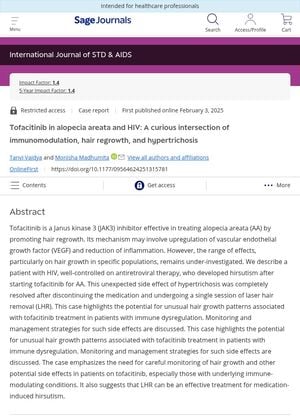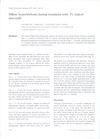Tofacitinib in Alopecia Areata and HIV: A Curious Intersection of Immunomodulation, Hair Regrowth, and Hypertrichosis
February 2025
in “
International Journal of STD & AIDS
”

TLDR Tofacitinib can cause unusual hair growth, requiring careful monitoring and possible laser hair removal.
Tofacitinib, a JAK3 inhibitor, is effective in treating alopecia areata by promoting hair regrowth, potentially through VEGF upregulation and inflammation reduction. A case study of a patient with HIV on antiretroviral therapy revealed unexpected hirsutism after starting tofacitinib, which resolved after discontinuing the drug and a single laser hair removal session. This highlights the potential for unusual hair growth patterns in patients with immune dysregulation on tofacitinib, emphasizing the need for careful monitoring and management of side effects. Laser hair removal may be an effective treatment for medication-induced hirsutism.







